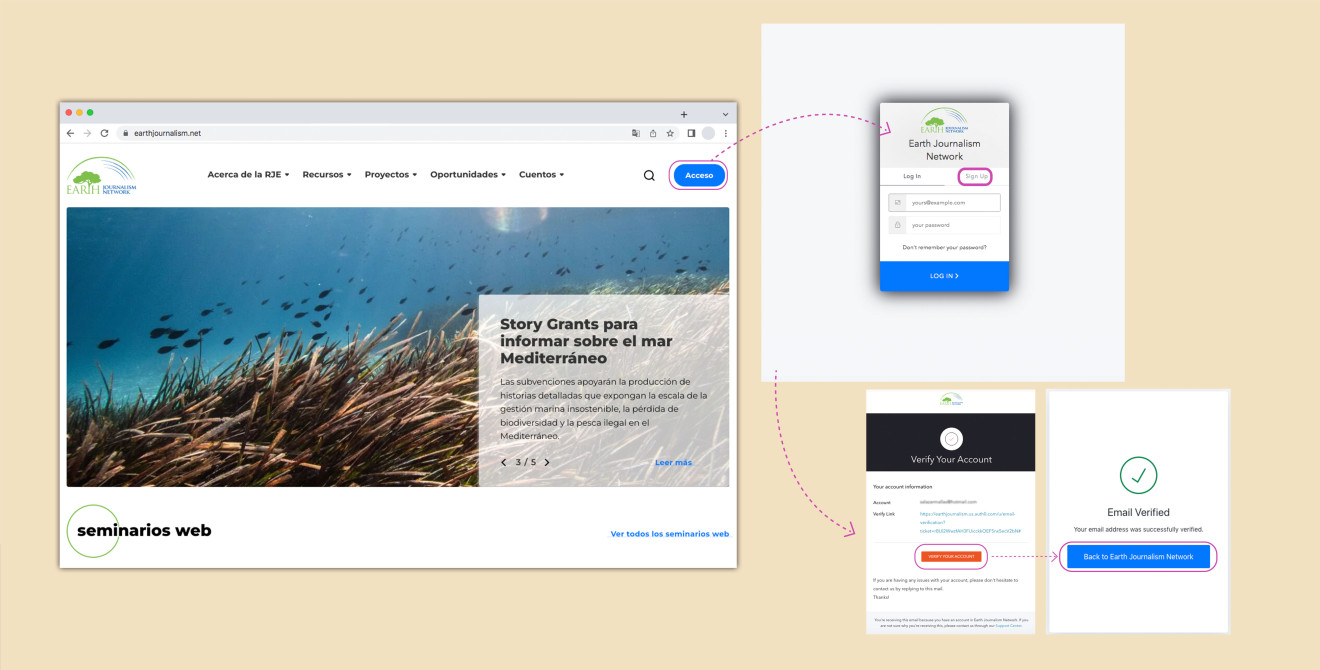No se encontraron resultados para la busqueda
Consulta este contenido en los idiomas y lenguas
This virtual training aims to improve coverage of the realities of indigenous peoples with a focus on human rights, the concept of “Mother Earth”, territory, and the environment.
The Earth Journalism Network (EJN) and independent media outlet Agenda Propia and their community Red Tejiendo Historias present this e-learning course to help Indigenous and non-Indigenous journalists around the world understand journalism from the perspective of Indigenous people.
Estimated time commitment: 7 hours
Certificate of completion: Yes
Languages: English and Spanish
Content
The course is composed of three modules. It starts with reflections on contemporary journalism as a whole, how Indigenous peoples are represented, with special emphasis on the work of the media and Indigenous journalists and communicators.
In addition, participants will learn about Indigenous human and territorial rights, gain access to an extensive repository of resources and receive recommendations for developing their own stories focused on the rights of Mother Earth and territory. These concepts are fundamental for the physical and cultural survival of Indigenous peoples, as well as the conservation of biodiversity.
The course ends with the development of the “Intercultural Collaborative Journalism” methodology, a tool designed by the Colombian media outlet Agenda Propia and their Red Tejiendo Historias program to co-create stories by way of intercultural teams of journalists and Indigenous people.
The platform also shares guides for the production of stories, proposals for topics worthy of journalistic coverage, different multimedia materials and inspiring reports to help learners.
At the end of the three modules, learners will be presented with a course evaluation. A certificate will be awarded to those who successfully complete the course.
Who can take the course?
This course is aimed at communicators, journalists, storytellers and journalism students –Indigenous and non-Indigenous– from any part of the world.
When does the course end?
This course does not have an end date. Each participant can go at their own pace. The course will be enabled on the platform throughout 2023.
EJN and Agenda Propia will schedule an orientation webinar in April 2023 for those who have completed the modules (or are in progress) and wish to delve into some of the topics.
What requirements are there to participate?
A stable internet connection and the willingness to follow the readings, download the materials and complete the assessments. As this is an asynchronous training, the pace and progress is up to the student.
Follow the steps below to access the course:
1. Log in to https://earthjournalism.net/ and create a user account through the Log in button located at the top. Join now!
2. Once you are logged in and have filled in your personal data, go to the course page in English: https://earthjournalism.net/resources/indigenous-journalism-territory-and-environment, at the end of the text you must click on the “Access the course here!” button, complete the form and finish by clicking on “Join EJN’s learning platform”.
3. You will receive an invitation to join the EJN learning platform by email.
4. Once inside the platform, in the main menu select “Content - Manage Channels” and the list of available courses will appear. Search and select the course “Indigenous Journalism, Territory and Environment” either in Spanish or English.
5. Ready! You can start Module 1. “Introduction to Indigenous Journalism.” Finally, to access the content we recommend clicking on the “Launch” button. This same action is repeated for each module.
Note: If you have any technical support questions, please send them to ejn-learning@internews.org.






